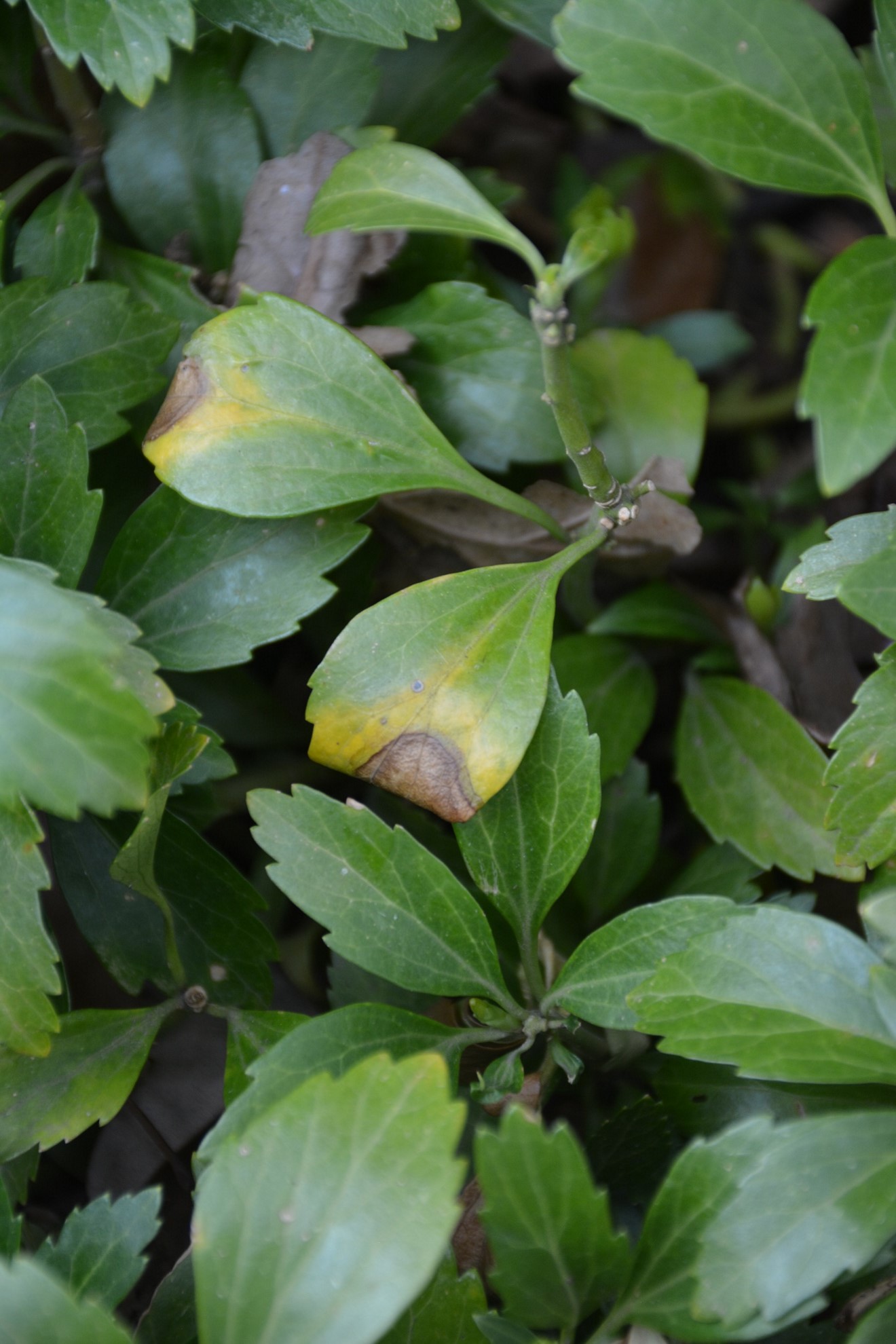Issue 1, May 2, 2023
Volutella Blight of Pachysandra
Japanese pachysandra (Pachysandra terminalis) is a mostly trouble-free species. However, it occasionally has problems with scale insects and fungal diseases, with Volutella blight being the most common.
Volutella blight symptoms begin as tan or brown leaf blotches that develop target-like concentric rings. The spots continue to enlarge and eventually kill the leaf. The fungus may progress through stems and stolons, causing cankers that girdle and kill stems. Tissues beyond the canker wilt and die. During warm, moist weather, pink to orange-brown spore pustules may be visible on the undersides of affected stems and leaves.

Volutella leaf blight lesion with concentric rings and dark brown margin. Travis Cleveland. University of Illinois.

Volutella leaf blight lesions on Japanese pachysandra. Travis Cleveland. University of Illinois.

Stem canker and wilted leaves of Japanese pachysandra, caused by Volutella Blight of Pachysandra. Travis Cleveland. University of Illinois
This disease is favored by a weakened or stressed host plant and is often seen on pachysandra damaged by winter injury. Other stresses, such as transplant shock, drought, excess moisture, shearing, scorch from excess sunlight, or scale infestations can also increase a host’s susceptibility to the disease.
Disease management should begin by removing and destroying all severely infected plant parts, preferably during dry weather. The next step should focus on alleviating known stresses and controlling scales and other pests. Remove accumulated leaf debris that may hold moisture. Protect from excess sunlight or desiccating winter winds. Irrigate during extended periods of dry weather. Periodically thinning pachysandra beds will increase air circulation and allow plants to dry quickly. Fungicides can be used to prevent new infections, especially when other options haven’t succeeded. Plants should be sprayed when new growth starts in the spring and repeated according to label directions to protect newly emerging tissues. Additional applications may be necessary during wet weather. Products with the active ingredients chlorothalonil or mancozeb are labeled for homeowner use. Commercial applicators have access to products with chlorothalonil, thiophanate-methyl, mancozeb, and copper-based active ingredients.
Author:
Travis Cleveland